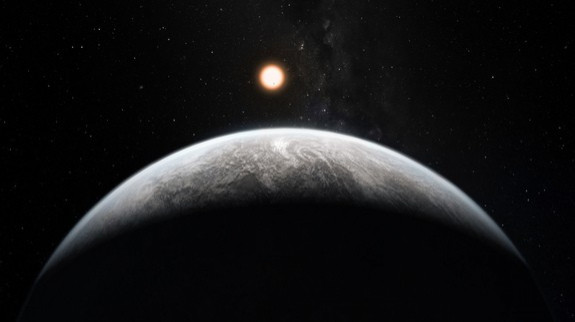Scientists Discover ‘Super-Earth’ Exoplanet that may Support Life

Astronomers announced on Monday that they have discovered 50 alien planets outside our solar system, including 16 so-called super-Earths, one of which orbits the edge of the habitable zone of its star.
The latest discovery, which includes 16 super-Earths, is the largest number of such planets ever announced at one time. A super-Earth is an extra solar planet with a mass higher than Earth, but substantially below the mass of the Solar System’s gas giants.
Scientists discovered the new planets with the help of High Accuracy Radial Velocity Planet Searcher (HARPS), also known as The Planet Hunter, at the European Southern Observatory's (ESO) location in La Silla, Chile.
The one particular planet named HD 85512b has caught the attention of Astrophysicists for having the potential to support life as it orbits a star about 36 light-years from Earth in the constellation Vela, according to ESO press release.
The astrophysicists used a method of reflectivity to find out how much energy a unit receives from its star. The more star reflected the more likely the planet is of having a cloudy atmosphere which leads to a possibility that the planet may have water on its surface.
If we are really, really lucky, this planet could be a habitat comparable to Earth, said Lisa Kaltenegger, an astronomer with Max Planck Institute for Astronomy, Heidelberg, Germany.
Scientists believe there is a slim possibility that it occupies the so-called Goldilocks zone, a term used to refer to planets that are neither too hot nor too cold to support liquid water.
This is the second planet discovered outside the solar system that could potentially support terrestrial life. The first one, called Gliese581d, was discovered in 2007.
This is a very exciting planet because if it is rocky, it will be the second confirmed planet that is within the habitable zone of its star, said Kaltenegger.
The new planet is about 3.6 times the mass of Earth and is closer to its star than the Earth is to our sun, completing a full orbit every 60 days, but its star is about 1,800 degrees cooler than our sun.
The temperatures in the planet are estimated to range from 30 to 50 Celsius and anyone in the planet would feel very warm and it hasn't been determined yet whether the planet is rocky like Earth or made of gas like Jupiter. For it to support life it would need to be rocky, instead of being gas-based like Jupiter, and would need enough cloud cover from its atmosphere to keep the surface cool.
In addition to the potential Goldilocks planet, astronomers deduced the existence of 50 other planets by noticing a slight wobble in stars that indicated an orbiting planet's gravitational pull. 16 of those planets appeared to be composed of rocks rather than gas.
The harvest of discoveries from HARPS has exceeded all expectations and includes an exceptionally rich population of super-Earths and Neptune-type planets hosted by stars very similar to our sun. And even better, the new results show that the pace of discovery is accelerating, said Michel Mayor, who led the team of researchers.
Scientists anticipate the number will become higher after planet-candidates are confirmed to be planets. There are more than 1,200 candidates that were discovered by NASA's Kepler space observatory in California, SPACE.com reported.
The next big milestone should be 1,000, chief scientist of NASA's Exoplanet Exploration Program at the Jet Propulsion Laboratory in Pasadena, California, Wesley Traub told SPACE.com.
We are learning that there are so many planets out there, and many stars have multiple planets around then, that it's just a question of time until we get to that 1,000 mark of confirmed planets.
© Copyright IBTimes 2024. All rights reserved.





















